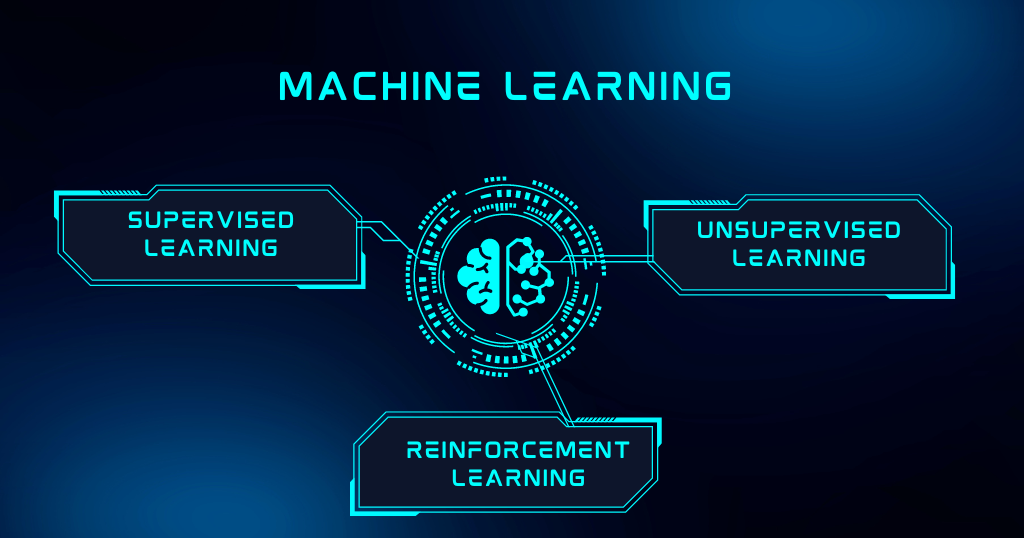Fintech
Binding seamless Technology with Finance



General Published on: Tue Feb 21 2023
Machine Learning is a branch of Artificial Intelligence (AI), and as the name suggests, it is an artificial human brain that tries to imitate how the human responds to a particular situation irrespective of whether he is accustomed to that situation in the past or not. No system is perfect, so due to the alias 'Artificial,' Machine Learning comes in handy with the errors in decision-making. So, there is always a scope for improvement in the field of Machine Learning.
Before Analyzing any further, consider the following example-
Suppose you have become the father/Mother for the first time, and you have decided to order a cradle from Amazon. The first thing you'd do is assemble the cradle. You will search for the user manual, right? You will go step by step and will try to follow the instructions. Suppose you have not assembled the cradle and your maid has swept off the instruction manual, then you are left with no choice but to do the guesswork, basically hit and trial to assemble the piece. You will start by first grouping similar pieces at a place and probably start the assembling process.
The above scenario is similar to how machine Learning works. With the data and problem statement in mind, a programmer chooses how to train the algorithm using particular learning. The different types of learning are supervised, unsupervised, and reinforcement learning. Let's talk about each of them in detail.
Consider that you are learning to drive a car. You are taking daily instructions from your driving teacher, who supervises if you are driving correctly or not. This is a similar situation to supervised learning. You have supervision on you. Pertaining to the particular features, you are labeled whether you belong to A category, B category, and so on (Can also be extended to continuous data). Thus, input data is labeled to output, and a model can learn from these instances.
Now that you have a decent idea of what Supervised Learning is let us dig deep into the types of Supervised Learning.
The two types are: -
Classification problem trains the algorithm in such a way that it classifies the test data into one of the members of a particular class or group. Suppose we have trained our model, which predicts whether the temperature will be hot or cold tomorrow based on past patterns or learnings, which comes under Classification Supervised Learning.
Regression Problems are for continuous data example- house price, age, weight, etc. Take the case to predict the temperature. Here, despite the weather tomorrow will be hot or cold, our classifier will try to predict the numerical temperature of tomorrow based on past learnings.
Now that we have learned that supervised learning has labeled data which is fed to train our classifier. The major difference between supervised and unsupervised learning is that unsupervised learning has no cleaned labeled data.
Let me articulate the above saying. Unsupervised learning is a self-learning algorithm that aims to find patterns or valuable information from unlabeled data.
In Unsupervised learning, a model receives the data without guidance. Boom! Did you relate to the cradle example at the starting, where the user manual was swept off by the maid, and the person had no choice but to set the cradle on the basis of some patterns? Yes, I am sure you must have. Similarly, in Unsupervised learning, a model gets the dataset without labels. Also, you don't have any clue what you expect from the data yet. You might be thinking that there might be a relationship between the data, but it is impossible to manually find the relationship between the data, especially when the data is big data. What actually happens, then? Well, in that case, grouping is done on the basis of patterns, and the model makes the comparisons to predict the output.
Now let us try to understand unsupervised learning with a real-life example.
Consider that we are given an unlabeled dataset with different animal types. How will my model predict whether my animal is a cat, bird, or a fish? If my model gets the information that an animal has a beak, feathers, wings, etc., it might be a bird. Similarly, if an animal has gills, lives in water, tail, it might be a fish, or if an animal has fluffy fur, a curly tail, and a floppy ear, it might be a cat.
Hence, based on this information, our model might be able to distinguish between different types of animals.
People generally get confused in reinforcement learning. Let me try to shed some light on this concept. In reinforcement learning, algorithms learn to react to an environment on their own. To be specific, there is a start and an end state for an agent (AI-driven system). There are multiple ways to reach it from beginning to end, like in a maze. By applying hit and trial, the algorithm learns itself to reach an endpoint. Some popular examples of reinforcement learning are self-driving cars, automatic vacuum cleaners., etc. Every time an agent takes a correct step, it is appreciated and otherwise penalized for the wrong step.
Let's go through a journey where a child takes his first step. What are the observations that a child makes?
It seems a difficult task for a child, right? But for an adult, it is a cakewalk. From the very first step till date, the adult has been awarded and penalized for the corresponding action, and this has made him an expert in walking.
Now putting it in a nutshell, here child is an agent who is trying to work through the environment (floor). Every time he takes a step, he is awarded but will not receive an appreciation if he is unable to walk. This is the overall gist of reinforcement learning.
I think with the help of this blog. I have made it clear that -
1) Supervised learning is learning with guidance (labeled data).
2) Unsupervised learning is learning without guidance.
3) Reinforcement learning is learning where a machine or an agent interacts with an environment and performs actions based on hit and trial.

Get 30 Mins Free
Personalized Consultancy